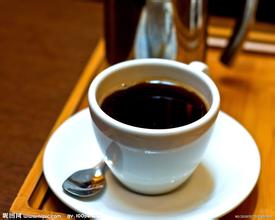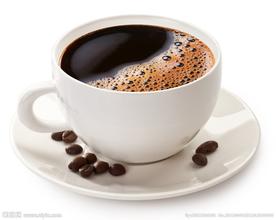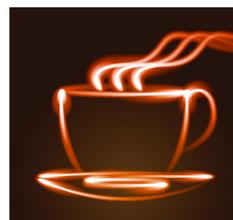Introduction to the way espresso is made there are several ways to make espresso
The powder should be uniform in the handle. After the hot water gathers to a pressure of about 9 Pa in the narrow space near the outlet, if you want to rush out of the bondage of pressed powder, the loose place will flow too much and cause excessive extraction, and the dense place will flow less and cause insufficient extraction, and all the efforts above will be bullshit. The 9-point full line of the powder bowl is the limit of powder thickness. after receiving the powder from the bean grinder, you should first hit the edge of the powder bowl horizontally with a powder press. In 3 to 4 directions, the interior of the powder is uneven, and horizontal tapping can achieve the goal of roughly average inside. But do not knock too much and for a long time, so that the powder is getting denser and denser, there will be cracks on the upper surface, and then the powder press will be put down, not pressing. Is to turn it so that the powder can be evenly distributed and adjust the powder level again, lift the powder press and hit the powder on the lower edge of the powder bowl, but it can be turned again but less than the first time, find the level again, lift the shock powder, and start to apply vertically. I suggest not turning hard, pay attention to the powder inside and outside the edge of the powder bowl, to prevent water from flowing out of the gap caused by powder! After the end, turn half a circle without pressure (to prevent the powder press from sticking to powder), lift, don't knock again, to prevent pressed powder from being separated from the powder bowl after forming, forming a gap. Pressing powder once is enough, not twice, to prevent pressed powder from detaching from the bowl or too dense.
Other common sense aside, warm cup ~ warm handle ~ and when the relative humidity is high, the powder is coarser, too fine affects the life of the bean grinder and the powder will stick, making pressed powder uneven.
Uniform, non-standard fine-tuning to find the standard, the taste of a cup of espresso is so good or bad that the dust is settled.
Second, hit the milk foam:
Milk is refrigerated in the refrigerator at a temperature of about 4 degrees: it is easy to preserve quality, the milk temperature for iced coffee and the milk temperature for hot coffee are usually 65 degrees and 70 degrees, so the lower the temperature of the milk is, the longer it can be heated, and the milk bubbles are more and finer.
Iced coffee with ice milk bubble, the tool is the milk bubble tank, the milk level should be high and filter a certain height, hit it. Dense holes blow out dense bubbles.
Hot coffee with hot milk foam, 65 to 70 degrees, espresso is 85 to 90 degrees, mixed is about 65 degrees, served in front of guests is more than 60 degrees, the entrance is neither hot nor cold, known as hot coffee.
It has been explained that the principle is because the fat content is higher than 3%, and then changes when heated to form milk bubbles and so on. I used to do well in chemistry and physics, but now the remaining memory fragments can't make me make a "solution:"... "
The day before yesterday, the store ran out of milk, so I forgot to order it, so I had to ride to the supermarket to buy it, so I bought a bottle of "President" skim milk by the way. When I came back, I beat it with steam twice, and it can make milk foam. I remember someone once said that skimmed milk bubbles can also be used to make foam. It is also said that milk bubbles change the properties of protein when heated. Hey, what about the bubble jar? it's not heated? How do you explain it? Everyone has played with soapy water and ate bubbles. I think the principle is the same. What is the surface tension, soapy water is too light to blow long-lasting bubbles, milk? There are few "sticky" ingredients, and there are no lasting bubbles. Many of the milk on the market is too light (impure, add water). You can see from the price that Nestl é milk is neither high nor low, nor pure, but with some thickeners and stabilizers, it has a similar effect to washing powder, right?
Ha ha, look at the people put up with me for a long time, I this nonsense is really a lot of ah, in fact, no matter what the principle of that, hit the foam on it. The key to beating milk foam is "fine air". When the milk is good, it is easy to hit, because you can first blow out a bigger milk bubble and then cut it with steam until it is very small and delicate. In fact, those who have used the bubble tank all know that the fight is very delicate, why? Because the small hole in that metal filter is fine enough. The "personal feeling" rotation method is better. The tilt angle of the steam rod, the height of the milk and the angle of the steam blown out of the steam nozzle should be matched well, so that the steam enters the liquid surface at about 45 degrees (not calculated accurately) and does not rush to the bottom of the cylinder (which will affect rotation). The steam should not be too small (rotate slowly, the gas brought in is not fine or fast) nor too large (heating too fast, spinning too fast) the steam nozzle is near the liquid level. Make the water vapor bring enough fine gas into the milk to form milk bubbles. The finer the sound, the smaller the gas brought in by the steam, and the better the effect of the foam. The amount of milk should be enough, or the heating time is too short and it will not be able to form a stable rotation, but do not pull the flower jar too much. Hit as much as you use, and pay attention to economy.
In addition: the position and angle of the flower jar should be changed with the change of sound and the number of milk bubbles.
Take a look at how many holes and how their steam nozzles are distributed, and whether there is a suitable angle to make the two streams of water vapor work in the "liquid surface", bringing in more small bubbles.

Important Notice :
前街咖啡 FrontStreet Coffee has moved to new addredd:
FrontStreet Coffee Address: 315,Donghua East Road,GuangZhou
Tel:020 38364473
- Prev

Coffee roaster introduction of different coffee varieties roasting degree introduction of boutique coffee beans
1, the principle of the direct-fired inner pot coffee roaster DISCOVERY to introduce the inner pot after punching processing, the bottom of the burner flame can be in direct contact with coffee beans. The direct-fire flavor is attached to the coffee and becomes a fragrant and delicious coffee. The flame and heat of the burner are the main heat sources of baking. 2. The principle of semi-hot air inner pot coffee roaster is introduced by DISCOVERY.
- Next

Slyer coffee machine Siler pull rod coffee machine semi-automatic coffee machine brand ranking
The advantages of Synesso are not only that, but also the peripheral punching head; pull rod steam valve switch; piezoelectric hot water switch; modular combination, that is, the coffee machine can be customized so that buyers can choose the functional components according to their preferences; and the details of the fuselage design, such as water collector, drain, warm cup plate, fuselage material and so on. Multi-boiler design. In addition to following the existing Italian coffee machine
Related
- What is the Philharmonic pressure? How to use Philharmonic pressure to make delicious coffee
- Why does a hand grinder have more fine powder than an electric grinder?
- In addition to the hot mom, what is the difference between the versions of EK43 | ditting and Mahdi ek43?
- What kind of equipment do you need to make coffee by hand? Introduction to novice starter cooking equipment tools
- Espresso needs to be ground how thick and thin scale entry Italian Coffee Machine Bean Grinder investigation and Grinding course
- How much does it cost to open a small private cafe? How much does it cost to learn coffee? How to operate it?
- The difference between the flavor characteristics of hand-brewed coffee and coffee maker is hand-brewed coffee really better than coffee maker? Can I use a coffee machine to make coffee beans by hand?
- The difference between 01 and 02 of hario v60 filter cup what is the difference between 01 and 02 filter cup opening and cooking flavor
- What's the difference between the smart cup and the French kettle? Which is better, the French kettle or the Smart Cup?
- What's the difference between a smart cup and a V60 filter cup? The difference between the taste of smart cup and hand-brewed coffee

